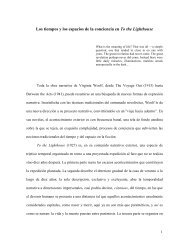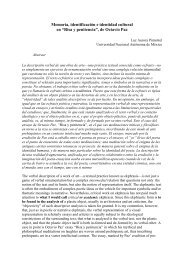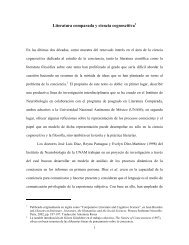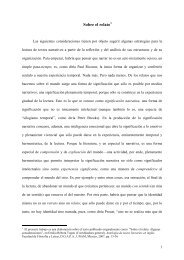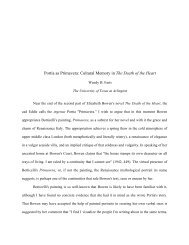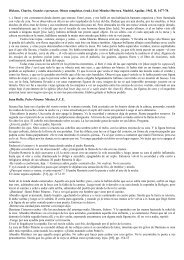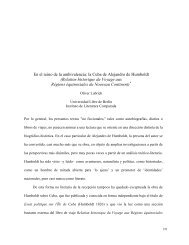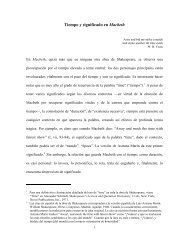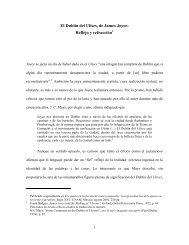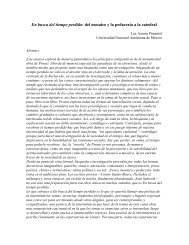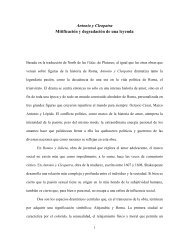Mundo Narrado IV. La Perspectiva: Un Punto De Vista Sobre El ...
Mundo Narrado IV. La Perspectiva: Un Punto De Vista Sobre El ...
Mundo Narrado IV. La Perspectiva: Un Punto De Vista Sobre El ...
You also want an ePaper? Increase the reach of your titles
YUMPU automatically turns print PDFs into web optimized ePapers that Google loves.
Ya en las primeras páginas aparece la metáfora maestra, catedral = cuerpo, que será<br />
punto de partida de importantes desarrollos temáticos, y que luego ha de someterse a las<br />
más brutales transformaciones:<br />
<strong>El</strong> modelo era como un hombre acostado boca arriba. <strong>La</strong> nave era sus piernas<br />
juntas, los transeptos en cada costado, sus brazos extendidos. <strong>El</strong> coro era su cuerpo,<br />
y la cabeza era la Capilla de Nuestra Señora donde ahora se llevarían a cabo los<br />
servicios. Y ahora también, surgiendo, proyectándose, irrumpiendo y haciendo<br />
erupción del corazón del edificio estaba aquello que habría de coronarlo y darle<br />
majestuosidad, la nueva aguja.<br />
[The model was like a man lying on his back. The nave was his legs placed<br />
together, the transepts on either side were his arms outspread. The choir was his<br />
body; and the <strong>La</strong>dy Chapel where now the services would be held, was his head.<br />
And now also, springing, projecting, bursting, erupting from the heart of the<br />
building, there was its crown and majesty, the new spire.] 19<br />
<strong>La</strong> catedral queda así figurada como el cuerpo de un hombre, mientras que el capitel y la<br />
aguja, en tanto que proyección material de una visión, constituyen un símbolo de elevación,<br />
la realidad espiritual de ese cuerpo yacente. Al proyectarse en piedra, “las líneas<br />
geométricas brotarían en una imagen del infinito” [the geometric lines would leap into a<br />
picture of infinity] (69). Pero si la maqueta es el modelo de lo que será la catedral coronada<br />
por el capitel y la aguja, Jocelin concibe su realización misma como el símbolo de una<br />
ascensión espiritual:<br />
<strong>El</strong> edificio es un diagrama de la oración, y nuestra aguja será el diagrama de la<br />
oración más elevada. Dios me lo reveló en una visión, a mí su improductivo<br />
servidor. Él me eligió a mí. Él te elige a ti [Roger Mason] para que llenes el<br />
diagrama con vidrio y hierro y piedra... (120)<br />
[The building is a diagram of prayer; and our spire will be a diagram of the<br />
highest prayer of all. God revealed it to me in a vision, his unprofitable servant. He<br />
chose me. He chooses you, to fill the diagram with glass and iron and stone...]<br />
19 William Golding, The Spire, Londres, Faber & Faber, 1964, p. 8. En citas subsecuentes la referencia se<br />
dará entre paréntesis. <strong>La</strong> traducción es mía.<br />
47



